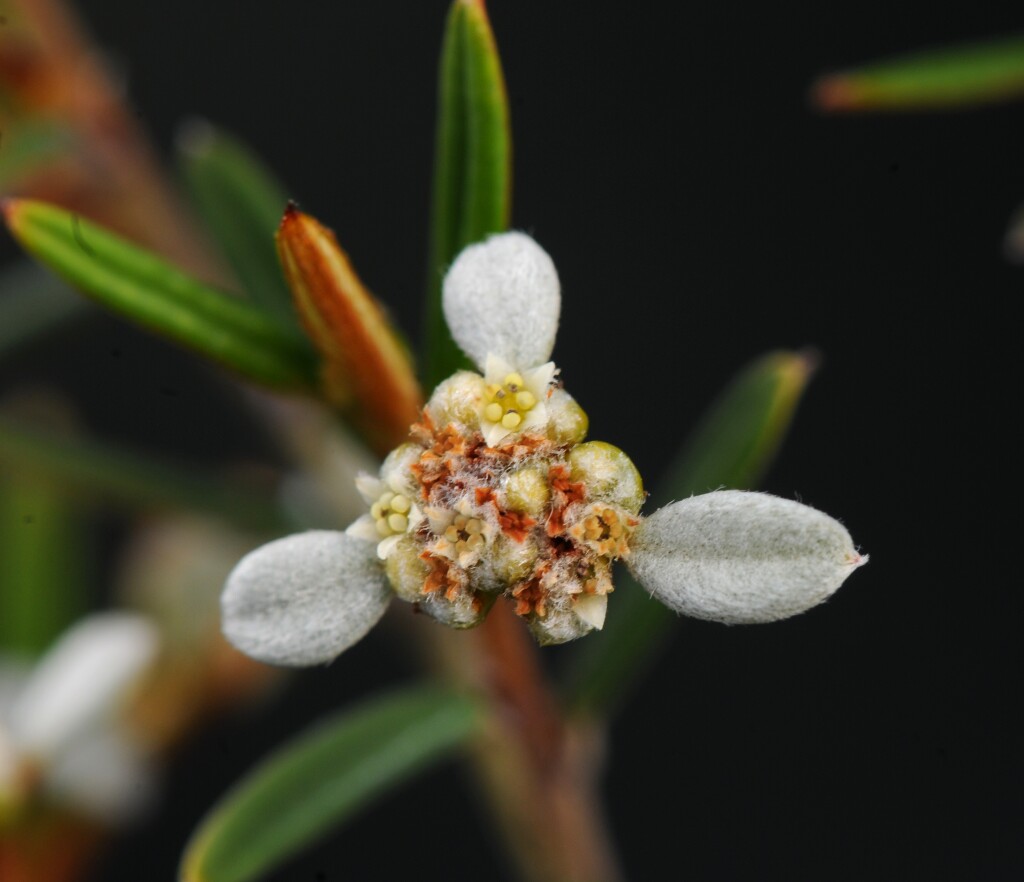Spyridium vexilliferum var. vexilliferum
Winged SpyridiumDecumbent to erect shrub to 1.4 m high; branchlets densely pubescent with (usually rusty) stellate hairs. Stem leaves shortly petiolate, linear to narrow-elliptic, 8–25 mm long, 1–3 mm wide, obtuse to acute, often shortly mucronate, upper surface glabrous, lower surface often obscured, whitish stellate-pubescent, midrib covered with appressed rusty silky hairs, margins revolute; floral leaves narrow-elliptic to elliptic, shorter and relatively broader than stem leaves, densely white-tometose on upper surface; stipules brown, 1–3 mm long, glabrous, often viscid, free. Flowers in dense pedunculate heads c. 5 mm diam., each head subtended by usually 2 or 3 floral leaves; perianth c. 1.5 mm long, white, externally villous; sepals c. 0.5 mm long, c. equal to free part of hypanthium; style c. 0.4 mm long, entire or shortly 3-lobed. Fruit c. 2 mm long. Flowers mostly Sep.–Jan.
LoM, Wim, GleP, Brid, GipP, OtP, GGr, DunT. An occasional component of heathland, heathy woodland or mallee, usually growing on sandy or gravelly soils, sometimes associated with rock.
Walsh, N.G. (1999). Spyridium. In: Walsh, N.G.; Entwisle, T.J., Flora of Victoria Vol. 4, Cornaceae to Asteraceae, pp. 115–120. Inkata Press, Melbourne.
 Spinning
Spinning